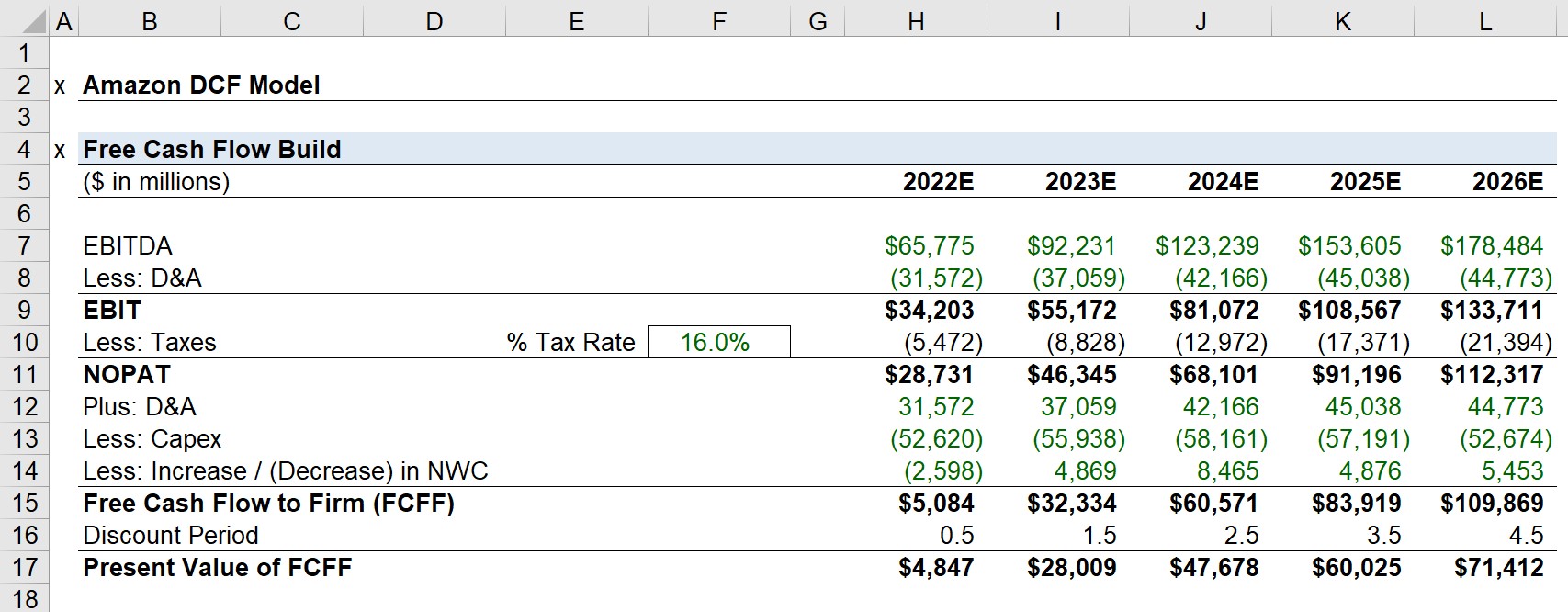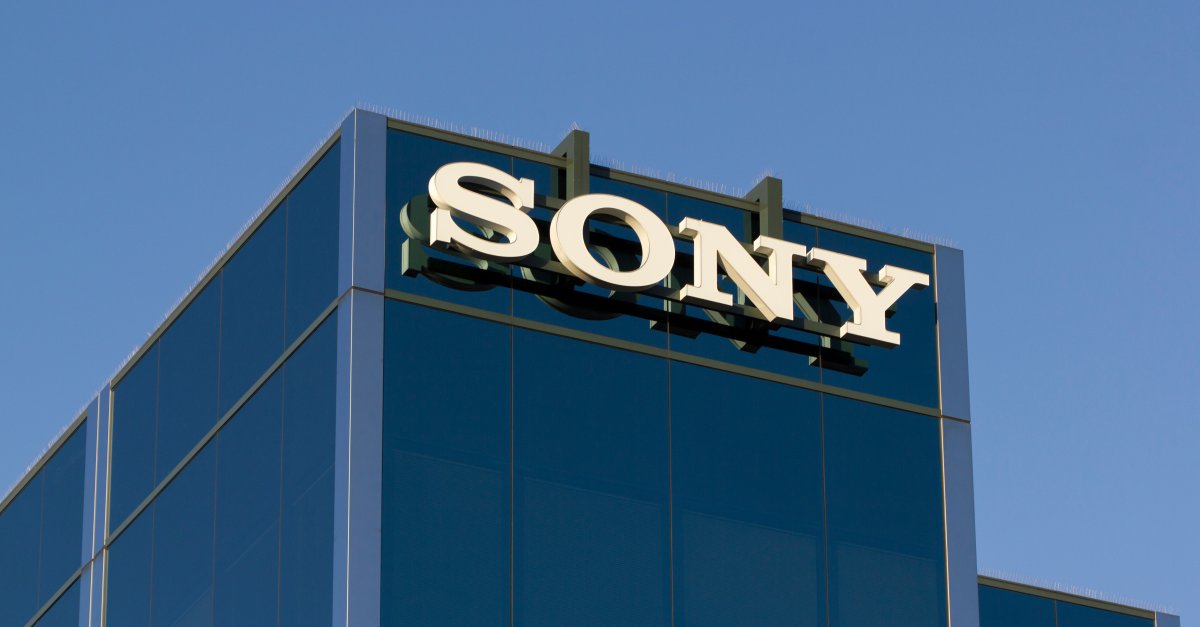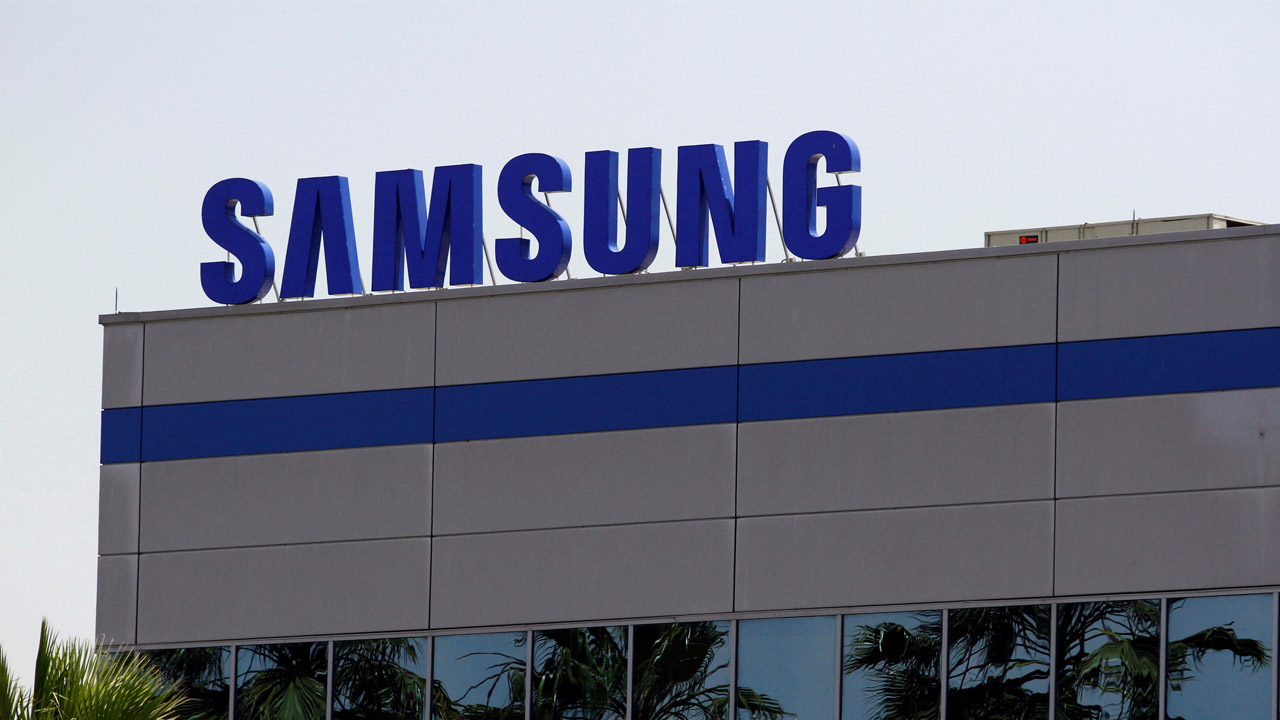

Finance
What Is Ameritrade’s Capital Structure?
Published: December 25, 2023
Learn about the capital structure of Ameritrade in finance. Explore the company's debt, equity, and financial standing to make informed investment decisions.
(Many of the links in this article redirect to a specific reviewed product. Your purchase of these products through affiliate links helps to generate commission for LiveWell, at no extra cost. Learn more)
Table of Contents
Introduction
When it comes to managing a company’s finances, one crucial aspect to consider is its capital structure. This refers to the way a company finances its operations through a combination of debt and equity. One company that has a notable capital structure is Ameritrade.
Ameritrade is a leading online brokerage firm, providing a platform for individual investors to trade securities. To support its operations and growth, Ameritrade relies on a well-balanced capital structure that combines debt and equity in a strategic manner.
In this article, we will delve into Ameritrade’s capital structure and explore the various components that make up its financial foundation. By understanding the dynamics of Ameritrade’s capital structure, we can gain insights into the company’s financial health, risk management strategies, and growth potential.
Let’s dive into the details of Ameritrade’s capital structure and uncover how it plays a crucial role in the company’s overall financial stability and success.
Overview of Ameritrade’s Capital Structure
Ameritrade’s capital structure is a combination of debt and equity that enables the company to finance its operations and investments. This financial framework provides a stable foundation for Ameritrade’s growth and helps manage risk effectively.
Debt is an important component of Ameritrade’s capital structure. The company issues corporate bonds or borrows from financial institutions to raise capital. The proceeds from these debt instruments are used to finance various needs of the business, such as expanding infrastructure, technology upgrades, and acquiring other companies.
Equity is another crucial element in Ameritrade’s capital structure. The company raises equity capital by issuing shares of stock to investors. This allows individuals and institutional investors to become shareholders and have ownership in the company. The funds obtained from equity issuance can be utilized for expanding operations, research and development, and marketing initiatives.
Ameritrade aims to maintain a balanced capital structure that optimizes its cost of capital while ensuring financial stability. By carefully managing the mix of debt and equity, Ameritrade can take advantage of tax benefits associated with debt financing, while also reducing the risk of insolvency by having a sufficient equity cushion.
It is important to note that Ameritrade’s capital structure may change over time based on market conditions, business needs, and strategic objectives. The company may adjust the proportions of debt and equity financing to align with its financial goals and optimize its capital structure.
By maintaining a well-structured capital foundation, Ameritrade can fund its growth initiatives, capitalize on market opportunities, and navigate potential economic challenges. The company’s capital structure serves as a guiding framework for making financial decisions and maintaining financial flexibility.
Debt in Ameritrade’s Capital Structure
Debt plays a significant role in Ameritrade’s capital structure, allowing the company to raise funds for various purposes while taking advantage of the tax benefits associated with interest payments.
Ameritrade utilizes debt financing through the issuance of corporate bonds and borrowing from financial institutions. These debt instruments come with predetermined interest rates and maturity dates, providing a structured framework for repayment.
One advantage of debt financing for Ameritrade is the ability to deduct interest payments from its taxable income. This reduces the overall tax liability and enhances the company’s profitability. Additionally, debt financing can promote efficient capital allocation by leveraging the available resources to generate higher returns on equity.
Ameritrade carefully manages its debt levels to ensure it remains within a manageable range. Excessive debt can increase the company’s financial risk, particularly during economic downturns or periods of financial stress. By maintaining a prudent amount of debt, Ameritrade can lower its borrowing costs and maintain financial stability.
The specific terms of Ameritrade’s debt agreements, including interest rates and repayment schedules, are negotiated based on market conditions and the company’s creditworthiness. This allows Ameritrade to secure favorable terms and ensure that its debt obligations are manageable.
A careful consideration of the debt portion of Ameritrade’s capital structure is essential to maintain a healthy balance between debt and equity. The company aims to optimize the cost of capital by striking the right balance between these two components.
Furthermore, Ameritrade’s debt level is influenced by its credit rating. A higher credit rating signifies lower credit risk and allows the company to access debt financing at more favorable interest rates. Ameritrade strives to maintain a strong credit rating, reflecting its solid financial position and reliable repayment ability.
In summary, debt is an integral part of Ameritrade’s capital structure, providing the company with access to capital and tax advantages. By carefully managing its debt levels and securing favorable terms, Ameritrade maintains financial flexibility and reduces risk in its overall financial profile.
Equity in Ameritrade’s Capital Structure
Equity plays a crucial role in Ameritrade’s capital structure, representing the ownership interest held by shareholders. Through the issuance of equity, the company raises capital to support its growth initiatives and enhance shareholder value.
Ameritrade offers shares of its stock to investors, allowing them to become owners and participate in the company’s financial success. Equity financing provides a long-term source of capital for Ameritrade, as shareholders have a vested interest in the company’s performance and growth potential.
By issuing equity, Ameritrade can raise additional funds to pursue strategic opportunities such as business expansion, research and development, and acquisitions. This enables the company to invest in its infrastructure, technology, and talent, enhancing its competitive position in the online brokerage industry.
Equity in Ameritrade’s capital structure also brings other benefits. It provides a means for existing shareholders to realize their investment gains if they choose to sell their shares in the open market. Additionally, equity ownership allows shareholders to vote on important company matters, including the appointment of board members and major corporate decisions.
Ameritrade’s equity value is influenced by various factors, including its financial performance, industry trends, market conditions, and investor sentiment. Positive financial results and growth prospects can drive increased demand for the company’s stock, leading to a higher share price and market capitalization.
Ameritrade strives to strike a balance between debt and equity in its capital structure to optimize its cost of capital. By incorporating equity financing, the company diversifies its funding sources and reduces reliance on debt, which can contribute to financial stability during volatile economic conditions.
Furthermore, Ameritrade values its relationship with shareholders and understands the importance of delivering value to them. The company aims to maintain transparency and provide timely and accurate information to ensure investor confidence in its operations and financial performance.
In summary, equity is a fundamental component of Ameritrade’s capital structure, providing the company with essential capital for growth and allowing investors to participate in its financial success. By issuing equity and maintaining a healthy balance between debt and equity, Ameritrade enhances its financial flexibility and aligns the interests of shareholders with the company’s long-term objectives.
Relationship between Debt and Equity in Ameritrade’s Capital Structure
The relationship between debt and equity in Ameritrade’s capital structure is a crucial aspect of the company’s financial management. Understanding this relationship is key to maintaining a well-balanced capital structure and optimizing the cost of capital.
Debt and equity have distinct characteristics and implications for Ameritrade’s financial position. Debt represents borrowed funds that need to be repaid over time, usually with interest, while equity represents ownership in the company. Both forms of financing play important roles in Ameritrade’s capital structure, but their impact on the company differs.
Debt financing offers advantages such as tax deductions on interest payments and the ability to leverage capital without diluting shareholder ownership. However, increasing levels of debt can also increase financial risk and decrease financial flexibility. High debt levels could lead to higher interest expenses and potential difficulties meeting debt obligations, especially during challenging economic conditions.
On the other hand, equity financing provides investors with ownership in Ameritrade and enables the company to raise capital without incurring debt. This reduces the risk of insolvency associated with excessive debt and increases financial resilience. Equity financing also allows the company to share the potential benefits of its future growth with shareholders.
A well-managed capital structure strives to find the right balance between debt and equity. Ameritrade carefully evaluates the proportion of debt and equity based on several factors, including its financial health, growth prospects, industry conditions, and market dynamics.
The relationship between debt and equity in Ameritrade’s capital structure is influenced by various external factors as well. Interest rates, credit availability, and investor sentiment can affect the cost and availability of debt financing. Market conditions and investor demand influence the company’s ability to issue equity and the valuation of its shares.
Ameritrade aims to optimize its cost of capital by capitalizing on favorable market conditions and selecting the most cost-effective financing options. By maintaining an appropriate balance between debt and equity, the company ensures financial stability, enhances growth opportunities, and manages its risk exposure effectively.
Strategic management of the relationship between debt and equity is essential for Ameritrade to navigate both the challenges and opportunities presented in the ever-evolving financial landscape.
Overall, the relationship between debt and equity in Ameritrade’s capital structure is a balancing act that involves careful consideration of the company’s financial needs, growth objectives, risk tolerance, and market conditions. By striking the right balance between these two forms of financing, Ameritrade can maintain financial stability while capitalizing on growth opportunities.
Capital Structure Risks and Benefits for Ameritrade
Ameritrade’s capital structure plays a significant role in shaping the company’s risk profile and determining its financial health. Understanding the risks and benefits associated with the capital structure is crucial for Ameritrade’s long-term success.
One benefit of Ameritrade’s capital structure is the ability to access both debt and equity financing. By using a combination of these two sources, Ameritrade can diversify its funding and leverage the advantages offered by each. Debt financing allows the company to take advantage of tax benefits and maintain financial flexibility, while equity financing provides an opportunity to raise capital without incurring debt and diluting existing shareholders’ ownership.
Another benefit of Ameritrade’s capital structure is the ability to optimize its cost of capital. By carefully managing its mix of debt and equity, the company can minimize the overall cost of financing and maximize its profitability. This balance allows Ameritrade to allocate its resources efficiently and pursue growth opportunities while maintaining a healthy financial position.
However, there are also risks associated with Ameritrade’s capital structure. One risk is the potential for excessive debt. High levels of debt can increase the company’s financial risk and make it more vulnerable to economic downturns or changes in interest rates. It also limits the company’s financial flexibility and ability to respond to unexpected events or market conditions. Ameritrade closely monitors its debt levels to ensure they remain within manageable limits and in line with its long-term financial objectives.
Additionally, fluctuations in the stock market and investor sentiment can impact the value of Ameritrade’s equity. If the company’s stock price declines significantly, it could affect its ability to raise equity capital in the future. Ameritrade aims to maintain a strong financial position and effective communication with its shareholders to mitigate this risk.
Ameritrade faces the challenge of striking the right balance between debt and equity to optimize its capital structure. The company must carefully assess its funding needs, market conditions, and risk appetite to determine the most appropriate mix of financing sources.
Overall, Ameritrade’s capital structure presents both risks and benefits. The company must carefully manage its debt levels, monitor market conditions, and maintain strong financial performance to mitigate risks and maximize the benefits of its capital structure.
By maintaining a well-balanced capital structure and effectively managing its financial risks, Ameritrade can position itself for continued growth, stability, and success in the highly competitive online brokerage industry.
Conclusion
Ameritrade’s capital structure is a critical aspect of its overall financial strategy. By combining debt and equity in a strategic manner, Ameritrade is able to effectively finance its operations, pursue growth opportunities, and manage its financial risks.
The company’s capital structure incorporates both debt and equity financing to strike a balance between the benefits and risks associated with each. Debt financing provides tax advantages and allows the company to leverage its capital, while equity financing allows for increased financial flexibility and the sharing of growth opportunities with shareholders.
Maintaining the right balance between debt and equity is crucial for Ameritrade to optimize its cost of capital and ensure financial stability. The company carefully manages its debt levels to avoid excessive risk and monitors market conditions to make informed financing decisions.
The relationship between debt and equity in Ameritrade’s capital structure is influenced by various external factors, such as interest rates, market conditions, and investor sentiment. By navigating these factors, Ameritrade can secure favorable terms for its financing and enhance shareholder value.
A well-structured capital foundation allows Ameritrade to fund its growth initiatives, capitalize on market opportunities, and navigate potential economic challenges. The company’s capital structure serves as a guiding framework for making financial decisions and maintaining financial flexibility.
In conclusion, Ameritrade’s capital structure plays a crucial role in shaping its financial health and growth potential. By carefully managing the mix of debt and equity, Ameritrade maintains financial stability while capitalizing on market opportunities. The company’s balanced capital structure positions it for continued success in the highly competitive online brokerage industry.














